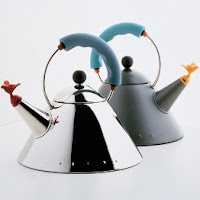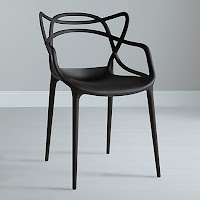Looking at what is featured in the book however, it seems that there is an issue, in that hardly any of the featured designs have ever made it into the homes of a significant amount of consumers. Don't read this as a criticism of the book though, or even a criticism of the attitudes of the design community, the problem is that good design has a genuinely hard time squeezing it's way into the hands of the majority of the population.
Looking at the last two paragraphs of the book, which includes the selected icons of design from the 1980's onwards, we see the following:
Now these designs are certainly significant, and all are generally genuinely good design, but out of the 20, I could only say that The Face, bird kettle, DC01, Verdana, Spun chair and iPad, have made any kind of impression on the mainstream.
A realistic 'hall of fame', with respect to what is actually, or at least has been, present in our environment, would look something like this :
Now i'm not saying that these products are neccesarily a better option, but this is my impression of what the market as a whole has selected. In design school, along with all the things on form and function, we are taught that our design output should attempt to be beneficial, or at least not harmful, to society as a whole; along with going through a design process with sympathy for both cost constraints, and other corporate interests. The classic iconic designs, if they reach no-one besides collectors, or the upper middle class, are clearly failing at one or both of these objectives.
Much of the world of 'design icons' is an interesting look into the ebbs and flows of 'contemporary' art and design history. But the house of the layman has hardly changed, besides the addition of an obnoxiously large TV, in 30 years. The world of modernism, post modernism, and whatever comes after that is almost completely detached from reality. To take an exert from Papanek's 'Design for the Real World':
"In his novel Magister Ludi, Hermann Hesse writes about a community of intellectual elites who have perfected a mystical, symbolic language, called the 'Bead Game', that has reduced all knowledge to a sort of unified field theory. The world outside the community is convulsed by riots, wars, and revolutions, but the players of the Bead Game have lost all contact. They are engaged in exchanging their esoterica with one another in the game. There is a disturbing parallel between Hesse's game and the aspirations of the contemporary artist when he speaks of his goals in the exercise of his private visions. He discourses on space, the transcendence of space, the multiplication of space, the division and negation of space. It is a space devoid of man, as though mankind did not exist. It is, in fact, a version of the Bead Game. "
I do think that the arguments that have been exchanged in the last century are extremely important, and as a new generation of design students it is extremely important that we study the 'masters' and learn of their motivations and their mistakes.
But if design genuinely has anything to offer to the people, our motivation should, in a large way, be focused on dragging good design from the elite and delivering it to the people. It has already been proven that good design is not impossible, and there is no reason why it should be any more expensive. But if we'd prefer to waste our time on another round of the bead game, no wonder the moneymakers are looking elsewhere for inspiration.
A large proportion of these images have been stolen from the internet with disregard to copyright, clicking on such images will link to what I can best make out to be the original source.






































Having experienced the services of Boxit dubai, I can confidently say that they are excellent movers and packers. Their professionalism and efficiency in handling the relocation process were truly commendable. From secure packing to timely delivery, Boxit Dubai demonstrated a commitment to customer satisfaction. If you're in search of reliable and trustworthy movers in Dubai, I highly recommend considering Boxit for a seamless and stress-free moving experience.
ReplyDelete